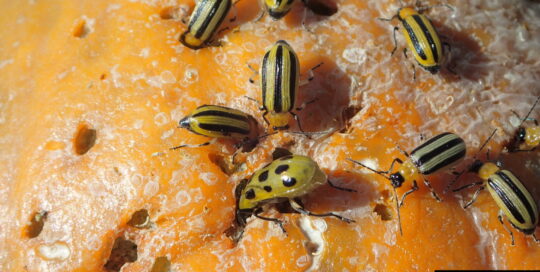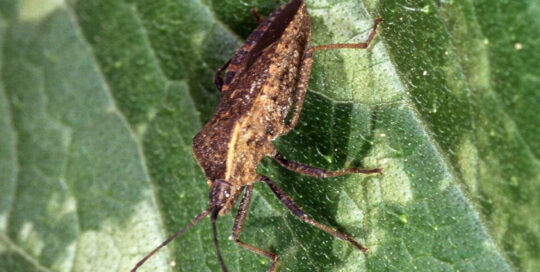How to Deal with Pests on Hydroponic Gardens
Views: 212

This year I’m growing my first winter hydroponic garden and absolutely love it. Rise Gardens sent me a personal garden to see what I thought about it, and it’s a treat to go to the back hallway to snip greens for a salad, or better yet, to enjoy fresh basil. But even though they’re easy to grow, pests on hydroponic gardens can still be an issues. Here are a few of the top insects you’ll probably see and how to handle them.
An Introduction to Pests in Hydroponic Production
Aphids In Hydroponic Gardens
No matter where you’re growing, aphids want to be first at the buffet. If you have other plants in the house, there’s a good chance you’ll have aphids at some point. The good news is they are super easy to eliminate. Start by spraying them with water. In a hydroponic situation you could remove the individual pods and place them under the faucet, gently squishing the aphids between your fingers.
For a less hands on approach, an insecticidal soap spray does a dandy job of reducing the population. Just be sure to spray underneath all of the leaves.
How to Safely Rid Your Indoor Plants of Pests
Whiteflies: The Other Sap-Sucker
Another sap-sucking pest, whiteflies attack plants en masse and can severely weaken the crop even on hydroponic gardens. You’ll most likely notice these tiny flies flitting around, but examine the undersides of your leaves for these tiny pests. Honeydew is also evidence of their presence, which is problematic because it promotes mold growth. Actually, sometimes people notice the mold before they see the pests.
To get rid of them, start with the easiest method of rinsing them with water, just like you do with aphids. If this doesn’t do the trick, step it up with insecticidal soap. For a chronic issue, consider placing yellow sticky traps near the hydroponic garden.
Fungus Gnats Without Soil
Just because you don’t have soil in hydroponic gardens, doesn’t mean you are immune from fungus gnats. These look very similar to whiteflies, but instead of targeting the foliage, they go for the roots of the plants. If you see tiny, maggot, like looking pass in the roots of your plants, fungus, gnats are the probable suspects. At this point, it may be beyond saving that particular plant, or plants, so prevention is the best remedy.
As with most indoor plants, resist using any tools or equipment from the outdoor garden, without at least thoroughly cleaning them. And if you do have an issue with fungus gnats in the house, use sticky traps to catch them before they infest the roots. Neem oil, pyrethrin and insecticidal soap are all helpful in knocking out the adults, as well. The key is preventing them from laying eggs and decimating your plants at the root level.
Hydroponic Gardens Can Have Thrips
Thrips are notorious pests for flowers such as gladioli and dahlias, but can be equally damaging in a hydroponic set up. And the problem is you will most likely see the damage before you see the Internet. If you notice distorted or discolored leaves on your plants, look closely, particularly on the undersides of the leaves. You might even require a magnifying glass to see these tiny pests.
You can try Neem oil or insecticidal soap on thrips, but many times it requires more drastic action. Some people, particularly with larger scale operations, put a barrier around their plants, while others bring in predatory mites to keep the thrips at bay. Once again, the pest response is prevention to not have to deal with them in the first place by keeping the pH and nutrients at their optimum levels, along with segregating anything you might use on outdoor plants.
The beauty of hydroponic gardening is healthy and delicious plants for so little effort. In reality, this includes keeping pests at bay. But if you do see something flitting around that shouldn’t be there, take measures early to keep your system producing well throughout the year.
Meet Amy Grisak
Amy is a freelance author and photographer in Great Falls, MT who specializes in gardening, foods, and sustainable agriculture. She provides information on every kind…
Amy's Recent Posts

How to Handle the Cucumber Beetle








